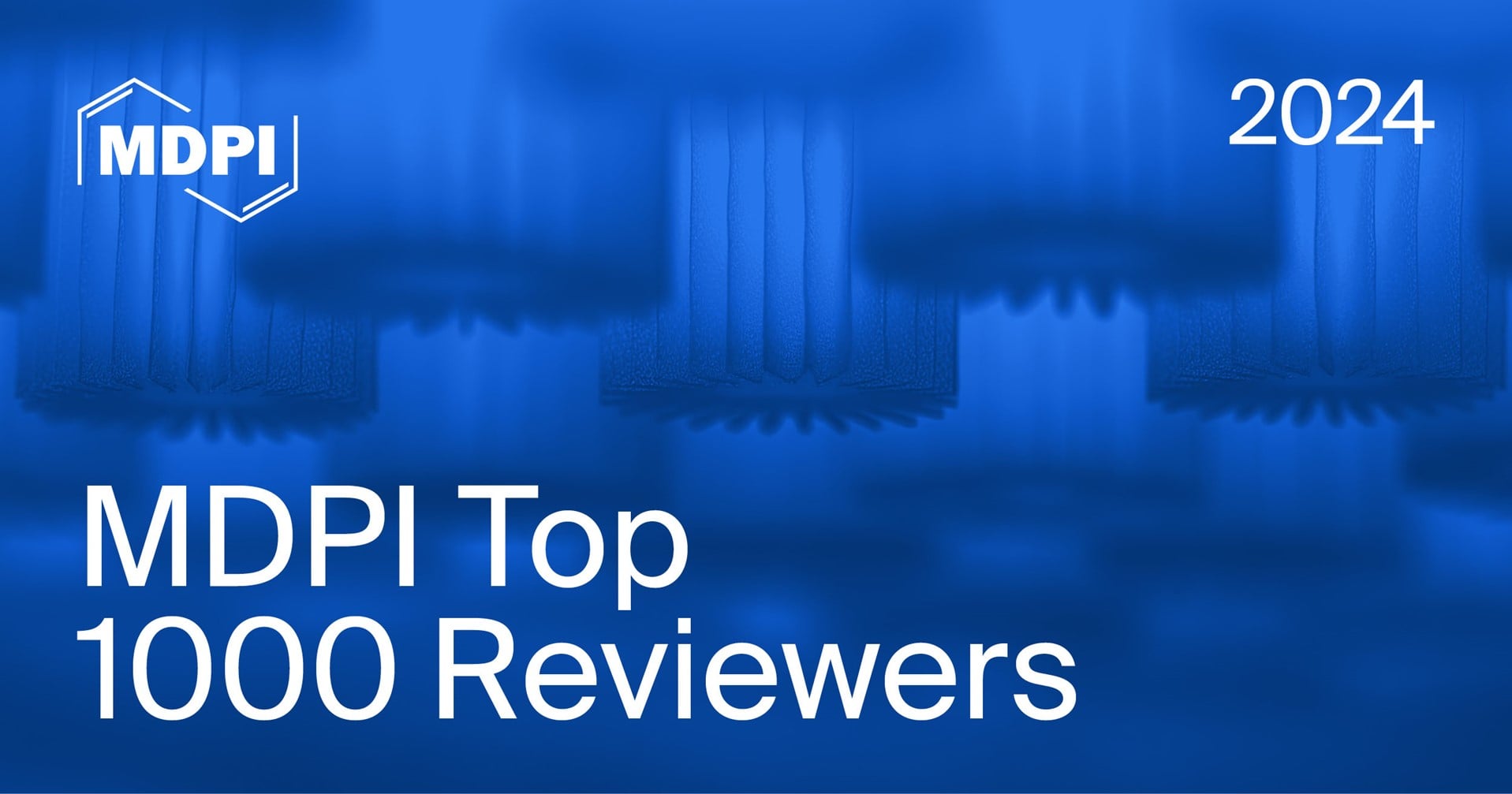Journal Description
Journal of Marine Science and Engineering
Journal of Marine Science and Engineering
is an international, peer-reviewed, open access journal on marine science and engineering, published monthly online by MDPI. The Australia New Zealand Marine Biotechnology Society (ANZMBS) is affiliated with JMSE and its members receive discounts on the article processing charges.
- Open Access— free for readers, with article processing charges (APC) paid by authors or their institutions.
- High Visibility: indexed with Scopus, SCIE (Web of Science), Ei Compendex, GeoRef, Inspec, AGRIS, and other databases.
- Journal Rank: JCR - Q2 (Engineering, Marine) / CiteScore - Q2 (Ocean Engineering)
- Rapid Publication: manuscripts are peer-reviewed and a first decision is provided to authors approximately 15.6 days after submission; acceptance to publication is undertaken in 1.9 days (median values for papers published in this journal in the first half of 2025).
- Recognition of Reviewers: reviewers who provide timely, thorough peer-review reports receive vouchers entitling them to a discount on the APC of their next publication in any MDPI journal, in appreciation of the work done.
- Journal Clusters of Water Resources: Water, Journal of Marine Science and Engineering, Hydrology, Resources, Oceans, Limnological Review, Coasts.
Impact Factor:
2.8 (2024);
5-Year Impact Factor:
2.8 (2024)
Latest Articles
Fixed-Time Event-Triggered Sliding Mode Consensus Control for Multi-AUV Formation Under External Disturbances and Communication Delays
J. Mar. Sci. Eng. 2025, 13(12), 2294; https://doi.org/10.3390/jmse13122294 - 2 Dec 2025
Abstract
This paper addresses the consensus control challenge for multiple autonomous underwater vehicles’ (AUVs) formation operating under external disturbances and communication delays. A fixed-time disturbance observer (FxTDO) is developed to precisely estimate external disturbances within a fixed time. A fixed-time state observer (FxTSO) is
[...] Read more.
This paper addresses the consensus control challenge for multiple autonomous underwater vehicles’ (AUVs) formation operating under external disturbances and communication delays. A fixed-time disturbance observer (FxTDO) is developed to precisely estimate external disturbances within a fixed time. A fixed-time state observer (FxTSO) is designed to reconstruct the leader’s position and velocity states, effectively compensating for communication delays. Building upon these observer estimates, an event-triggered sliding mode controller is proposed to achieve formation consensus with guaranteed convergence time while significantly reducing communication frequency through its triggering mechanism. The entire approach ensures fixed-time convergence of the closed-loop system, and rigorous theoretical proof of this stability is provided. Simulation results confirm the effectiveness of the proposed scheme in handling external disturbances and delays, achieving accurate formation tracking with improved communication efficiency. This work provides a robust solution for multi-AUV coordination in challenging environments.
Full article
(This article belongs to the Section Ocean Engineering)
Open AccessArticle
Heatwaves Affect the Gonadal Maturation of the Sea Urchin Paracentrotus lividus
by
Amalia Amato, Tania Russo, Davide Caramiello, Alberto Macina, Anna Di Cosmo, Gianluca Polese, Valerio Zupo and Maria Costantini
J. Mar. Sci. Eng. 2025, 13(12), 2293; https://doi.org/10.3390/jmse13122293 - 2 Dec 2025
Abstract
Climate-induced ocean warming poses a major threat to marine invertebrate reproduction, including the sea urchin Paracentrotus lividus, a species of considerable ecological, economic, and scientific interest. Its gonads, highly valued as a culinary delicacy, support local fisheries and aquaculture industries, making reproductive
[...] Read more.
Climate-induced ocean warming poses a major threat to marine invertebrate reproduction, including the sea urchin Paracentrotus lividus, a species of considerable ecological, economic, and scientific interest. Its gonads, highly valued as a culinary delicacy, support local fisheries and aquaculture industries, making reproductive health a critical factor for both conservation and commercial viability. The present study reported the effects of elevated seawater temperatures, mimicking marine heatwave (MHW) conditions, on gonadal maturation and fertilization success on P. lividus. Here, adult specimens at the mature stage of gametogenesis were exposed to control (18 °C) and elevated temperature regimes (24 °C) over a six-week period, and key reproductive metrics were assessed, including histological analysis. Morphological analysis showed very evident gonadal retraction, nearly devoid of germ cells, both for males and females, with a significant decrease in the gonadal index. In addition, histological analysis revealed consistent damage to the gonads, with a significantly increase in histopathological index in specimens kept at 24 °C. These findings reinforce the temperature sensitivity of P. lividus reproduction, suggesting that recurrent heatwaves could severely impair its reproductive output and population dynamics with potential cascading effects on benthic community structure in a long-term ocean warming predicted to intensify.
Full article
(This article belongs to the Special Issue Selected Feature Papers in Marine Environmental Science)
►▼
Show Figures
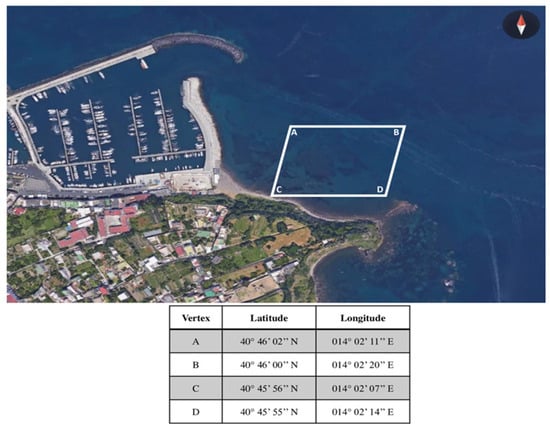
Figure 1
Open AccessArticle
CFRP–Concrete Interfacial Bond Behavior on Circular Concrete Surfaces in Hygrothermal Marine Environments
by
Jia-Wei Zhang and Xiao-Hui Wang
J. Mar. Sci. Eng. 2025, 13(12), 2292; https://doi.org/10.3390/jmse13122292 - 2 Dec 2025
Abstract
The strengthening performance of carbon-fiber-reinforced polymer (CFRP) in concrete structures primarily depends on the CFRP–concrete interfacial bond behavior. For CFRP-strengthened circular reinforced concrete (RC) pipe piles in marine environments, the interfacial bond behavior is susceptible to hygrothermal conditions. In this study, cylindrical concrete
[...] Read more.
The strengthening performance of carbon-fiber-reinforced polymer (CFRP) in concrete structures primarily depends on the CFRP–concrete interfacial bond behavior. For CFRP-strengthened circular reinforced concrete (RC) pipe piles in marine environments, the interfacial bond behavior is susceptible to hygrothermal conditions. In this study, cylindrical concrete specimens were designed and subjected to pull-off tests to evaluate the CFRP–concrete interfacial performance under simulated marine environmental attacks (3 days in a 50 °C salt spray followed by 4 days of seawater immersion). The deterioration mechanism and failure modes of the CFRP–concrete bond behavior in such environments were analyzed, and relationship equations describing the interfacial bond degradation were proposed and validated. Test results indicated that the CFRP–concrete bond strength at circular interfaces is approximately 21% lower than that at planar interfaces. Under hygrothermal marine conditions, the average CFRP–concrete bond strength remained relatively stable in the early stages due to the competing effects of epoxy plasticization and post-curing, while variability increased significantly in later stages. For test specimens in Group A without concrete surface grinding before CFRP wrapping, an initial bond strength of 1.5 MPa was exhibited, while, for test specimens in Group B, with surface grinding, the initial bond strength started at 2.0 MPa. Both groups experienced a significant CFRP–concrete bond strength reduction of 0.4 MPa after the first wet–dry cycle, with the subsequent average strength stabilizing near initial values. Notably, Group B achieved a peak strength of 3.88 MPa at 84 days, attributed to surface grinding, which enhanced bond strength by 33% and delayed bond failure. The overall stable average strength resulted from averaging high-strength and degraded points. A bond degradation model based on averaged strength reduction was proposed: demonstrating a strength loss of 27%–36% after 98 days of accelerated marine environmental exposure. The proposed equations describing the interfacial bond degradation on a circular concrete surface predict well the flexural capacity of CFRP-wrapped RC beams under similar environmental conditions, where the calculated flexural capacity is 0.8 times the experimental value, confirming the model’s conservative and safe design applicability.
Full article
(This article belongs to the Section Coastal Engineering)
►▼
Show Figures
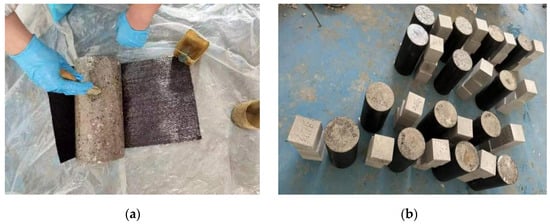
Figure 1
Open AccessArticle
Investigation of Pullout Capacity Characteristics of Suction Anchors Under Inclined Loads in Layered Soil
by
Cheng-Liang Ji, Xia-Tao Zhang, Hao-Yu Wang, Le-Le Liu and Deng-Feng Fu
J. Mar. Sci. Eng. 2025, 13(12), 2291; https://doi.org/10.3390/jmse13122291 - 2 Dec 2025
Abstract
Suction anchors are widely used in marine engineering because of their easy installation, cost-effectiveness, and excellent load-bearing capacity. However, existing research on their bearing capacity has primarily focused on homogeneous soils, which fails to adequately reflect the actual bearing capacity of layered seabed
[...] Read more.
Suction anchors are widely used in marine engineering because of their easy installation, cost-effectiveness, and excellent load-bearing capacity. However, existing research on their bearing capacity has primarily focused on homogeneous soils, which fails to adequately reflect the actual bearing capacity of layered seabed soils. Therefore, this study conducted a series of numerical simulations to investigate the pullout bearing capacity of suction anchors subjected to inclined loads in upper-stiff–lower-soft layered clay. By considering the clay strength (Sum/kD) and soil layer thickness ratio (Th/L, Tc/L), this study systematically explores the influence of the optimal centerline loading depth (Zcl,opt), uniaxial ultimate bearing capacity (Hult and Vult), and the VH failure envelope of suction anchors. The results indicate that the layer thickness ratio Th/L of lightly overconsolidated clay (LOC) is the key factor influencing the Zcl,opt and ultimate bearing capacity Hult and Vult. An increase in Th/L significantly enhances the pullout resistance of suction anchors, which primarily results from the combined enhancement effect of lateral friction resistance and end resistance at the anchor–soil interface. The layered clay has a distinct influence on the horizontal and vertical bearing capacities of suction anchors. Based on the results of parameter analysis, a conservative analytical expression for the lower bound of the VH failure envelope curve is further proposed. The research conclusions provide a theoretical basis and engineering practice guidance for the optimized design and safety assessment of suction anchors in layered soil.
Full article
(This article belongs to the Section Ocean Engineering)
►▼
Show Figures
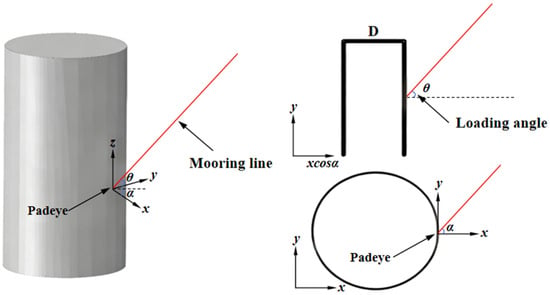
Figure 1
Open AccessArticle
High-Resolution Underwater Imaging via Richardson–Lucy Deconvolution Beamforming with Acoustic Frequency Comb Excitation
by
Jie Li, Jiace Jia, Deyue Hong, Yi Zhu, Shuo Yang, Zhiwen Qian and Jingsheng Zhai
J. Mar. Sci. Eng. 2025, 13(12), 2290; https://doi.org/10.3390/jmse13122290 - 2 Dec 2025
Abstract
Underwater acoustic imaging is essential in marine science and engineering, enabling high-resolution detection and characterization of underwater structures and targets. However, conventional deconvolution beamforming methods using broadband signals often suffer from model mismatch, inter-frequency interference, and limited noise robustness. To overcome these challenges,
[...] Read more.
Underwater acoustic imaging is essential in marine science and engineering, enabling high-resolution detection and characterization of underwater structures and targets. However, conventional deconvolution beamforming methods using broadband signals often suffer from model mismatch, inter-frequency interference, and limited noise robustness. To overcome these challenges, this study rigorously analyzes the point spread function of the imaging system and introduces Acoustic Frequency Comb (AFC) excitations to enhance resolution. By exploiting the autocorrelation characteristics of AFC signals and optimizing key parameters, imaging artifacts are effectively suppressed and the main-lobe width is narrowed, resulting in a 50% improvement in range resolution. Comparative analyses identify the Richardson–Lucy algorithm as the most effective in enhancing azimuthal resolution and maintaining robustness under array perturbations and low signal-to-noise ratios. Parametric studies further demonstrate that AFC excitation outperforms conventional linear frequency modulated pulses, achieving a 30% main-lobe width reduction, 10 dB sidelobe suppression, and a 14 dB noise decrease. Finally, tank experiments confirm the simulation results, showing that accurate PSF modeling enabled by AFC ensures high angular resolution. The discrete spectral structure facilitates more effective separation of signal and noise during iterative deconvolution, while excellent autocorrelation characteristics guarantee high range resolution, yielding superior overall imaging performance.
Full article
(This article belongs to the Special Issue Underwater Acoustics: Advances in Modelling, Measurement, and Technological Applications)
►▼
Show Figures

Figure 1
Open AccessArticle
Seawater Flow-Freezing Characteristics in Open Container Injection Under Low-Temperature Conditions
by
Yuhao Fan, Bei Peng, Puyu Jiang, Jiahui Ren, Yuesen Lin, Longlong Gao and Baoren Li
J. Mar. Sci. Eng. 2025, 13(12), 2289; https://doi.org/10.3390/jmse13122289 - 1 Dec 2025
Abstract
The phenomenon of seawater flow-freezing exists during ballast water injection and drainage in polar vessels, but the heat transfer and ice evolution behaviors under low-temperature flow conditions remain unclear. This study developed a computational model for ballast tank freezing using the volume of
[...] Read more.
The phenomenon of seawater flow-freezing exists during ballast water injection and drainage in polar vessels, but the heat transfer and ice evolution behaviors under low-temperature flow conditions remain unclear. This study developed a computational model for ballast tank freezing using the volume of fluid (VOF) and enthalpy–porosity method, and constructed a scaled experimental platform for the simulation model validation. Based on this model, the flow-heat transfer and ice evolution process in the ballast tank are analyzed in detail, with a focus on the influence of injection velocity, pipe diameter, and position on seawater freezing characteristics. The results show that during low-temperature water injection, phase change occurs preferentially in the tank bottom region, with ice presenting as a slurry morphology; when injection velocity increases from 0.25 m/s to 3.5 m/s, the maximum ice-phase volume fraction increases by 48.9%, indicating faster flow accelerates phase-change freezing; compared to other diameters, DN150 piping exhibits the highest turbulent kinetic energy (0.054 m2/s2) and the maximum shear stress (12.49 Pa), demonstrating optimal freezing resistance; compared to bottom injection, sidewall injection intensifies heat transfer/icing near tank walls and increases ice-clogging risk around ports. This study reveals intrinsic mechanisms of dynamic ice-blockage evolution, providing theoretical basis for anti-clogging design in polar ship systems.
Full article
(This article belongs to the Section Ocean Engineering)
►▼
Show Figures

Figure 1
Open AccessArticle
Numerical and Optimization Study on the Hydraulic Performance of a Closed Pump Intake Sump with Variable Bellmouth Clearance
by
Jiaqi Chen, Zhongyu Qian, Yi Huang, Chaozhen He and Zhuangzhuang Sun
J. Mar. Sci. Eng. 2025, 13(12), 2288; https://doi.org/10.3390/jmse13122288 - 1 Dec 2025
Abstract
In coastal pumping stations, the intake sump geometry strongly affects flow uniformity, hydraulic loss, and vortex formation. This study establishes an Isight-based automated simulation and optimization framework for an axial-flow pump with a closed-type intake to clarify the influence of bellmouth diameter and
[...] Read more.
In coastal pumping stations, the intake sump geometry strongly affects flow uniformity, hydraulic loss, and vortex formation. This study establishes an Isight-based automated simulation and optimization framework for an axial-flow pump with a closed-type intake to clarify the influence of bellmouth diameter and clearance height on sump hydraulics. A Radial Basis Function surrogate model combined with the NonLinear Programming by Quadratic Lagrangian (NLPQL) was employed to minimize hydraulic loss and improve flow uniformity. The results show that hydraulic loss first decreases and then increases with bellmouth diameter, whereas velocity uniformity and the mean inflow angle exhibit nonlinear variations with clearance height. The optimal configuration increases efficiency by 3.82% and the velocity uniformity by 1.62% compared with the baseline. Helicity density and the Ω-criterion were used to identify vortex structures, revealing that small clearances intensify bottom and wall-attached vortices, whereas larger clearances promote symmetric inflow. An improved tangential-velocity method based on iso-vorticity contours effectively captured near-wall vortex dynamics. These findings provide theoretical support for achieving low head loss, stable inflow, and controlled vortex behavior in axial-flow pump intake systems.
Full article
(This article belongs to the Section Ocean Engineering)
►▼
Show Figures
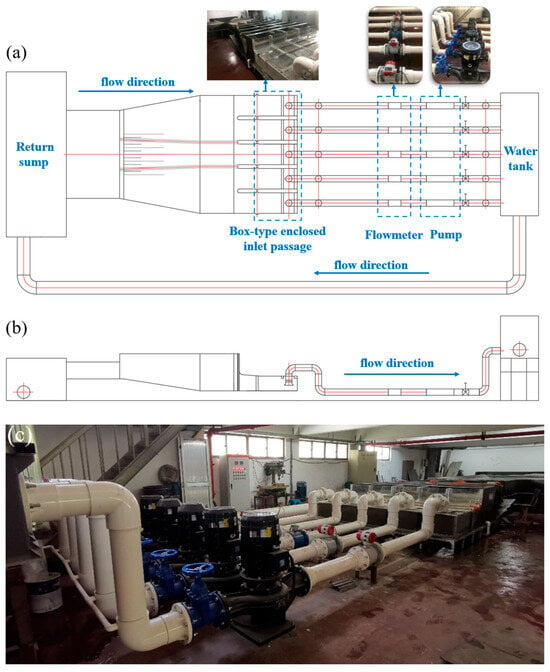
Figure 1
Open AccessArticle
Active Heave Compensation for Ship–Cable–Body Systems via Real-Time PID-OrcFxAPI Framework and Multi-Maneuver Performance Analysis
by
Lei Tan, Mengjie Jiang and Chaohe Chen
J. Mar. Sci. Eng. 2025, 13(12), 2287; https://doi.org/10.3390/jmse13122287 - 1 Dec 2025
Abstract
In harsh marine environments, during the operation of the Ship–Cable–Body coupled system, the towed cable may become slack or taut, and tension oscillations may occur, leading to cable breakage or launch and recovery system (LARS) damage, underscoring the need for effective compensation control.
[...] Read more.
In harsh marine environments, during the operation of the Ship–Cable–Body coupled system, the towed cable may become slack or taut, and tension oscillations may occur, leading to cable breakage or launch and recovery system (LARS) damage, underscoring the need for effective compensation control. Traditional offline and static simulation methods fail to capture the system’s dynamics, leading to inaccurate validation of control strategies. To address this, we propose a real-time dynamic modeling framework using the OrcFxAPI, enabling millisecond-level bidirectional interaction between the towed body’s motion and LARS commands. By integrating a Python 3.10-based PID controller with OrcFxAPI, the framework achieves real-time active heave compensation (AHC) in deep-sea towing, dynamically adjusting cable length and payout speed based on feedback to suppress vibrations. Unlike prior studies focused on launch and recovery, this work systematically evaluates AHC performance during typical operations (hovering, linear and turning motion), and compares system responses with and without compensation. Results show the AHC framework significantly improves towed body stability, reduces tension fluctuations, and keeps tension within safe working limits (SWLs), while identifying critical cable payout speed thresholds for practical operation. The approach validates the use of OrcFxAPI for high-fidelity real-time coupling analysis and provides a reliable tool for optimizing control and design of deep-sea towing systems.
Full article
(This article belongs to the Section Ocean Engineering)
►▼
Show Figures
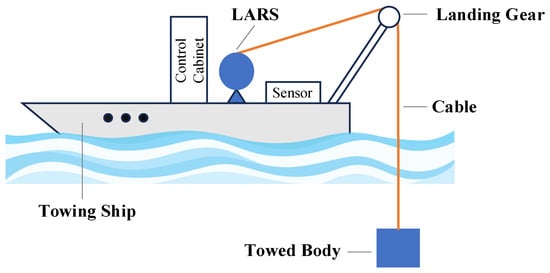
Figure 1
Open AccessCorrection
Correction: Bonnail et al. Physicochemical Characterization of Desert Bay with Brine Discharge: A Case Study from Caldera Bay, Northern Chile. J. Mar. Sci. Eng. 2025, 13, 1199
by
Estefanía Bonnail, Yesenia Rojas-Lillo, T. Ángel DelValls and Edgardo Cruces
J. Mar. Sci. Eng. 2025, 13(12), 2286; https://doi.org/10.3390/jmse13122286 - 1 Dec 2025
Abstract
In the published article [...]
Full article
Open AccessArticle
Intelligent Multi-Objective Path Planning for Unmanned Surface Vehicles via Deep and Fuzzy Reinforcement Learning
by
Ioannis A. Bartsiokas, Charis Ntakolia, George Avdikos and Dimitris Lyridis
J. Mar. Sci. Eng. 2025, 13(12), 2285; https://doi.org/10.3390/jmse13122285 - 30 Nov 2025
Abstract
Unmanned Surface Vehicles (USVs) are increasingly employed in maritime operations requiring high levels of autonomy, safety, and energy efficiency. However, traditional path planning techniques struggle to simultaneously address multiple conflicting objectives such as fuel consumption, trajectory smoothness, and obstacle avoidance in dynamic maritime
[...] Read more.
Unmanned Surface Vehicles (USVs) are increasingly employed in maritime operations requiring high levels of autonomy, safety, and energy efficiency. However, traditional path planning techniques struggle to simultaneously address multiple conflicting objectives such as fuel consumption, trajectory smoothness, and obstacle avoidance in dynamic maritime environments. To overcome these limitations, this paper introduces a Deep Q-Learning (DQN) framework and a novel Fuzzy Deep Q-Learning (F-DQN) algorithm that integrates Mamdani-type fuzzy reasoning into the reinforcement-learning (RL) reward model. The key contribution of the proposed approach lies in combining fuzzy inference with deep reinforcement learning (DRL) to achieve adaptive, interpretable, and multi-objective USV navigation—overcoming the fixed-weight reward limitations of existing DRL methods. The study develops a multi-objective reward formulation that jointly considers path deviation, curvature smoothness, and fuel consumption, and evaluates both algorithms in a simulation environment with varying obstacle densities. The results demonstrate that the proposed F-DQN model significantly improves trajectory optimality, convergence stability, and energy efficiency, achieving over 35% reduction in path length and approximately 70–80% lower fuel consumption compared with the baseline DQN, while maintaining comparable success rates. Overall, the findings highlight the effectiveness of fuzzy-augmented reinforcement learning in enabling efficient and interpretable autonomous maritime navigation.
Full article
(This article belongs to the Special Issue Advanced Control Strategies for Autonomous Maritime Systems)
►▼
Show Figures
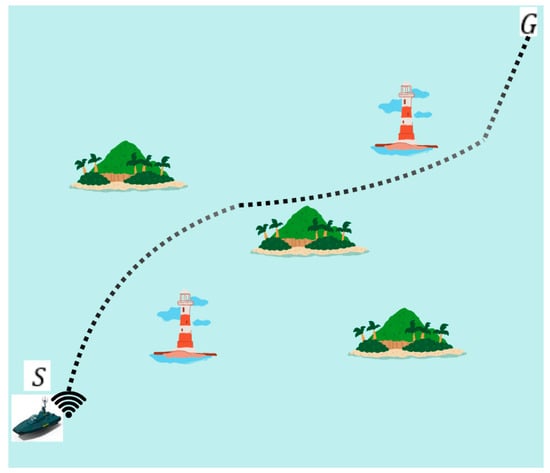
Figure 1
Open AccessArticle
A Versatile SPH Approach for Modelling Very Flexible and Modularized Floating Structures in Moored Configurations
by
Rafail Ioannou, Vasiliki Stratigaki, Eva Loukogeorgaki and Peter Troch
J. Mar. Sci. Eng. 2025, 13(12), 2283; https://doi.org/10.3390/jmse13122283 - 30 Nov 2025
Abstract
A variety of Offshore Floating Photovoltaics (OFPVs) applications rely on the capacity of their floating support structures displacing in the shape of surface waves to reduce extreme wave-induced loads exerted on their floating-mooring system. This wave-adaptive displacement behaviour is typically realized through two
[...] Read more.
A variety of Offshore Floating Photovoltaics (OFPVs) applications rely on the capacity of their floating support structures displacing in the shape of surface waves to reduce extreme wave-induced loads exerted on their floating-mooring system. This wave-adaptive displacement behaviour is typically realized through two principal design approaches, either by employing slender and continuously deformable structures composed of highly elastic materials or by decomposing the structure into multiple floating rigid pontoons interconnected via flexible connectors. The hydrodynamic behaviour of these structures is commonly analyzed in the literature using potential flow theory, to characterize wave loading, whereas in order to deploy such OFPV prototypes in realistic marine environments, a high-fidelity numerical fluid–structure interaction model is required. Thus, a versatile three-dimensional numerical scheme is herein presented that is capable of handling non-linear fluid-flexible structure interactions for Very Flexible Floating Structures (VFFSs): Multibody Dynamics (MBD) for modularized floating structures and floating-mooring line interactions. In the present study, this is achieved by employing the Smoothed Particles Hydrodynamics (SPH) fluid model of DualSPHysics, coupled both with the MBD module of Project Chrono and the MoorDyn+ lumped-mass mooring model. The SPH-MBD coupling enables modelling of large and geometrically non-linear displacements of VFFS within an Applied Element Method (AEM) plate formulation, as well as rigid body dynamics of modularized configurations. Meanwhile, the SPH-MoorDyn+ captures the fully coupled three-dimensional response of floating-mooring and floating-floating dynamics, as it is employed to model both moorings and flexible interconnectors between bodies. The coupled SPH-based numerical scheme is herein validated against physical experiments, capturing the hydroelastic response of VFFS, rigid body hydrodynamics, mooring line dynamics, and flexible connector behaviour under wave loading. The demonstrated numerical methodology represents the first validated Computational Fluid Dynamics (CFD) application of moored VFFS in three-dimensional domains, while its robustness is further confirmed using modular floating systems, enabling OFPV engineers to comparatively assess these two types of wave-adaptive designs in a unified numerical framework.
Full article
(This article belongs to the Section Ocean Engineering)
►▼
Show Figures
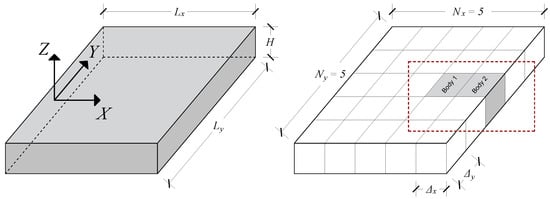
Figure 1
Open AccessArticle
Underwater Sound Source Depth Estimation Using Deep Learning and Vector Acoustic Features
by
Biao Wang, Chao Chen, Xuejie Bi and Kang Yang
J. Mar. Sci. Eng. 2025, 13(12), 2284; https://doi.org/10.3390/jmse13122284 - 29 Nov 2025
Abstract
Accurate estimation of underwater sound source depth plays a crucial role in ocean acoustic monitoring, underwater target localization, and marine environment exploration. This study exploits the capability of vector hydrophones to simultaneously and co-locally acquire both scalar and vector components of the underwater
[...] Read more.
Accurate estimation of underwater sound source depth plays a crucial role in ocean acoustic monitoring, underwater target localization, and marine environment exploration. This study exploits the capability of vector hydrophones to simultaneously and co-locally acquire both scalar and vector components of the underwater sound field. Based on the study of the line spectrum interference structure characteristics of the underwater sound field, the vertical sound intensity flux of the underwater sound source is extracted. Additionally, a parallel BiLSTM and ResNet network structure is proposed to train this feature and achieve depth estimation of underwater sound sources. Experimental results show that under ±10% and ±15% errors in the source–hydrophone distance, the proposed model maintains stable performance within a signal-to-noise ratio (SNR) range of −15 dB to +15 dB. Compared with the LSTM model, the ResNet model, and the matched-field processing (MFP) algorithm, the average RMSE of our model is reduced by 72.4%, 54.0%, and 64.1%, respectively. Furthermore, under 5% and 10% frequency estimation errors, the average RMSE of the proposed model within the same SNR range is reduced by 47.7%, 20.3%, and 79.3%, respectively. It effectively estimates the depth of underwater sound sources, with estimation errors below 5 m under non-extreme SNR conditions. These results fully demonstrate the robustness and effectiveness of the proposed method under practical uncertainties in the ocean environment.
Full article
(This article belongs to the Section Ocean Engineering)
►▼
Show Figures
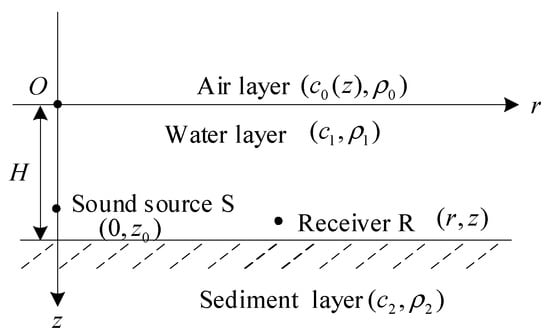
Figure 1
Open AccessArticle
Hull Girder Ultimate Strength Analysis for Thin-Walled Steel Structures
by
Mateja Tomičić, Jerolim Andrić, Pero Prebeg and Smiljko Rudan
J. Mar. Sci. Eng. 2025, 13(12), 2282; https://doi.org/10.3390/jmse13122282 - 29 Nov 2025
Abstract
The ultimate strength of the hull girder represents one of the key criteria in the design of large thin-walled steel structures such as ships and aircrafts. For large ship structures, the hull girder’s ultimate strength is expressed as the maximum internal vertical bending
[...] Read more.
The ultimate strength of the hull girder represents one of the key criteria in the design of large thin-walled steel structures such as ships and aircrafts. For large ship structures, the hull girder’s ultimate strength is expressed as the maximum internal vertical bending moment that the hull structure can absorb before collapse. In this paper, a progressive collapse analysis of the hull girder has been performed for several different variants of large steel thin-walled box girders, taken from the literature as benchmark cases, using the nonlinear finite element method (NLFEM), considering both material and geometrical nonlinearity. Results from the performed calculations were compared to the numerical results of other researchers published in the literature, as well as the results of our physical experiment. The influence of initial geometrical imperfection on the value of the ultimate bending moment achieved with NLFEM has been investigated.
Full article
(This article belongs to the Special Issue Design and Analysis of Ship Structure)
Open AccessArticle
Syntheses on Taxonomic and Functional Biodiversity Related to Ocean Acidification in a Well-Studied CO2 Vents System: The Castello Aragonese of Ischia (Italy)
by
Maria Cristina Gambi, Cinzia Gravili, Francesco Cozzoli and Adriana Giangrande
J. Mar. Sci. Eng. 2025, 13(12), 2281; https://doi.org/10.3390/jmse13122281 - 29 Nov 2025
Abstract
Ocean acidification (OA) is considered a relevant additional threat to marine biodiversity and is linked to the increasing CO2 concentration in the atmosphere. Here, we provide a synthesis on the loss of both taxonomic and functional biodiversity, in the up to date
[...] Read more.
Ocean acidification (OA) is considered a relevant additional threat to marine biodiversity and is linked to the increasing CO2 concentration in the atmosphere. Here, we provide a synthesis on the loss of both taxonomic and functional biodiversity, in the up to date best studied CO2 vents in the world, the Castello Aragonese of Ischia (Tyrrhenian Sea, Italy), analyzing a large data set available at this site and reporting qualitative taxonomic data along a gradient of OA from ambient normal conditions outside the vents (pH 8.1) to low pH conditions (pH 7.8–7.9) and extreme low pH conditions (pH < 7.4). A total of 618 taxa were recorded (micro- and macrophytes, benthic invertebrates, and fishes). A relevant loss of biodiversity (46% of the species) was documented from control/normal pH conditions to low pH, and up to 56% species loss from control of extreme low pH conditions. Functional groups analysis on the fauna (calcification, size, motility, feeding habit, and reproduction/development) allowed us to draw an identikit of the species which is able to better thrive under OA conditions. These are motile forms, small- or medium-sized, generalist feeders, at the low level of the food web (herbivores or detritivores), mainly brooders, or with indirect benthic development, and without calcification or weakly calcified.
Full article
(This article belongs to the Section Marine Biology)
►▼
Show Figures
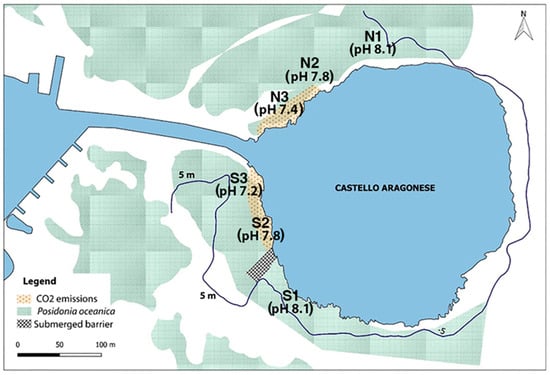
Figure 1
Open AccessArticle
Port Resilience Assessment for Misdeclaration Induced Disasters Using a Hybrid LLM-GNN Framework
by
Bo Song, Yanjun Weng and Laiqun Xia
J. Mar. Sci. Eng. 2025, 13(12), 2280; https://doi.org/10.3390/jmse13122280 - 29 Nov 2025
Abstract
Ports face critical security threats from hazardous cargo misdeclaration, which poses unique challenges due to its high concealment and catastrophic potential, as exemplified by the Beirut Port explosion. Traditional resilience assessment approaches relying on hazard state transition probabilities require abundant historical data or
[...] Read more.
Ports face critical security threats from hazardous cargo misdeclaration, which poses unique challenges due to its high concealment and catastrophic potential, as exemplified by the Beirut Port explosion. Traditional resilience assessment approaches relying on hazard state transition probabilities require abundant historical data or extensive domain expertise for probability elicitation, and static indicator-based assessment frameworks fail to capture the spatiotemporal evolution characteristics of disasters. To address these challenges, this study proposes a hybrid framework that leverages the Large Language Model (LLM)’s generalizable world knowledge for data augmentation while developing a Spatiotemporal Graph Neural Network (STGNN) to predict dynamic disaster propagation. Specifically, a multimodal LLM is employed to extract structured port state descriptions from temporally aligned disaster data and infer the states at undocumented time steps. With more disaster scenarios adapted from the real cases using the LLM, a STGNN is trained to learn the disaster evolution dynamics and make efficient real-time inference for resilience assessment and intervention strategy evaluation. Validation on Tianjin and Beirut Port incidents demonstrates that the framework accurately predicts disaster propagation pathways and identifies critical intervention priorities. It also reveals that topology-based intervention strategies substantially accelerate recovery, while adverse environmental conditions significantly amplify cumulative functional loss. This study represents an advancement toward AI-driven resilience modeling, offering port operators and regulators an adaptable, scalable decision support tool for intelligent safety governance.
Full article
(This article belongs to the Special Issue New Trends in Engineering and Operational Research on Container Supply Chain Management for Resilience, Digitalization, Intelligence and Sustainability)
►▼
Show Figures
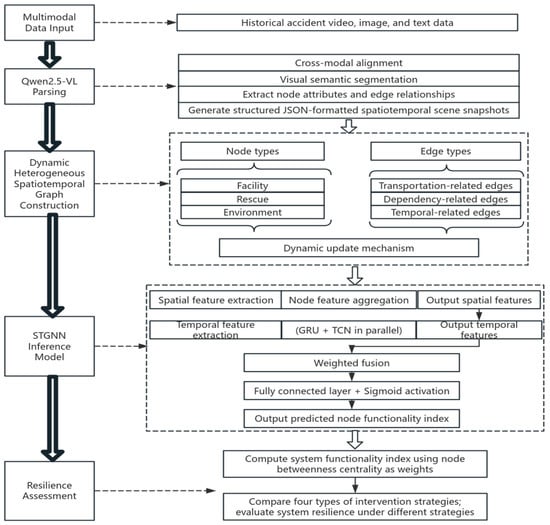
Figure 1
Open AccessArticle
Comparative Analysis of Mechanical and Hybrid Propulsion Systems for Buoy Maintenance Vessel Based on Real-Sea Operational Data
by
Heonbeom Lee, Jayoung Jung, Youngdu Kim, Seongwan Kim and Hyeonmin Jeon
J. Mar. Sci. Eng. 2025, 13(12), 2279; https://doi.org/10.3390/jmse13122279 - 29 Nov 2025
Abstract
To achieve carbon neutrality in shipping and comply with the IMO’s increasingly stringent environmental regulations, the transition of small and medium-sized workboats to eco-friendly alternatives is an urgent issue. This study quantitatively compares the fuel efficiency and operational fuel cost savings of hybrid
[...] Read more.
To achieve carbon neutrality in shipping and comply with the IMO’s increasingly stringent environmental regulations, the transition of small and medium-sized workboats to eco-friendly alternatives is an urgent issue. This study quantitatively compares the fuel efficiency and operational fuel cost savings of hybrid propulsion systems based on actual operational data from a buoy maintenance vessel. The methodology comprised four stages: First, measurement equipment was installed on the vessel to collect real-sea data. Second, the collected data were processed to derive specific fuel oil consumption curves and load profiles. Third, fuel consumption models for mechanical and hybrid propulsion systems were developed. The battery capacity of the hybrid models was selected based on actual operational requirements. Performance indicators and economic analyses were conducted for a comparative evaluation. Fourth, simulation results indicated that the hybrid electric system achieves 2.02% fuel savings, translating to annual fuel savings of USD 1053.24 and a corresponding 2.02% CO2 reduction. The hybrid mechanical system yielded 0.66% savings. These improvements are attributed to a rule-based energy management strategy of operating generators at their optimal efficiency points and shutting down main engines during low-load periods. This study provides empirical evidence supporting Korea’s 2030 eco-friendly public vessel transition plan.
Full article
(This article belongs to the Special Issue Energy Efficiency Optimization Technologies for Shipping Decarbonization)
►▼
Show Figures
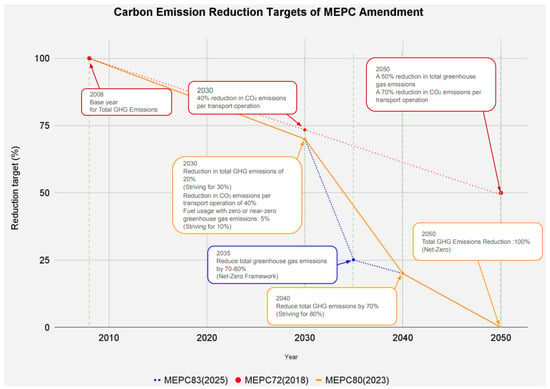
Figure 1
Open AccessArticle
Experimental Study on Seabed Stability Around an Offshore Pipeline Under Waves and Currents: Local Scour and Pore-Water Pressure
by
Mengxiao Li, Dong-Sheng Jeng, Lin Cui, Zuodong Liang, Zheng Wang, Dajun Liu, Dayu Chang and Ke Sun
J. Mar. Sci. Eng. 2025, 13(12), 2278; https://doi.org/10.3390/jmse13122278 - 29 Nov 2025
Abstract
Offshore pipelines are commonly used for the transportation of oil and gas from offshore to near-shore facilities in the oil and gas industry. In ocean environments, the wave- and current- induced pore-water pressure within the seabed, and the associated seabed liquefaction and local
[...] Read more.
Offshore pipelines are commonly used for the transportation of oil and gas from offshore to near-shore facilities in the oil and gas industry. In ocean environments, the wave- and current- induced pore-water pressure within the seabed, and the associated seabed liquefaction and local scour around pipelines, are widely recognised as among the key factors in the design of offshore pipelines. In this paper, a series of wave flume experiments were carried out on the three-dimensional (3D) scouring around a pipeline. In the experiment, in addition to the measurement of hydrodynamic characteristics and local scour, the pore-water pressure within a sandy seabed was measured. Both waves and currents were considered with different incident angles to the pipeline. This study focuses on the relationship between the variation in pore-water pressure and the development of the scouring process around the pipeline, as well as the evolution of the 3D scouring morphology near the pipeline. The experimental results show that the pore-water pressure exhibits significant changes (up to 12.5% of
(This article belongs to the Section Coastal Engineering)
►▼
Show Figures

Figure 1
Open AccessArticle
Neural Network-Based Prediction of Wave Pressure Distribution on Hyperbolic Paraboloid Surfaces
by
Sam Smith, Gaoyuan Wu and Maria Garlock
J. Mar. Sci. Eng. 2025, 13(12), 2277; https://doi.org/10.3390/jmse13122277 - 29 Nov 2025
Abstract
Recent studies have demonstrated the potential of hyperbolic paraboloid (hypar), a doubly curved geometry, in coastal engineering applications. Predicting pressure distribution, critical for subsequent finite element analysis, on such novel three-dimensional structures require Computational Fluid Dynamics (CFD) simulations, which are computationally intensive. To
[...] Read more.
Recent studies have demonstrated the potential of hyperbolic paraboloid (hypar), a doubly curved geometry, in coastal engineering applications. Predicting pressure distribution, critical for subsequent finite element analysis, on such novel three-dimensional structures require Computational Fluid Dynamics (CFD) simulations, which are computationally intensive. To address this challenge, the current study develops an artificial neural network (ANN) surrogate to predict pressure distributions on hypar free-surface breakwaters (FSBWs) under solitary wave loading. Using Smoothed Particle Hydrodynamics (SPH) as the CFD tool, simulations generate the supervised learning dataset, where inputs are the hypar warping
(This article belongs to the Section Ocean Engineering)
►▼
Show Figures
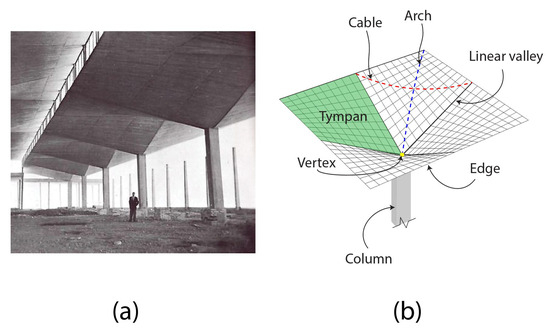
Figure 1
Open AccessArticle
Analysis of Dynamic Responses of Floating Offshore Wind Turbines in Typical Upstream Wake Conditions Based on an Innovative Coupled Dynamic Analysis Method
by
Yangwei Wang, Jisen Zong, Jianhui Mou, Junjie Yang and Xinghao Zhu
J. Mar. Sci. Eng. 2025, 13(12), 2276; https://doi.org/10.3390/jmse13122276 - 28 Nov 2025
Abstract
Floating offshore wind turbines (FOWTs) are crucial for harnessing deep-sea wind energy resources. However, existing studies on FOWTs have predominantly focused on standalone wind turbines, neglecting the wake effects from upstream turbines within the offshore wind farms, thereby leading to inaccurate analyses. This
[...] Read more.
Floating offshore wind turbines (FOWTs) are crucial for harnessing deep-sea wind energy resources. However, existing studies on FOWTs have predominantly focused on standalone wind turbines, neglecting the wake effects from upstream turbines within the offshore wind farms, thereby leading to inaccurate analyses. This study developed a coupled dynamic analysis method integrating aerodynamics, hydrodynamics, and mooring dynamics, incorporating the upstream wake effects through a three-dimensional (3D) Gaussian wake model and a nonlinear lift line free vortex wake (LLFVW) model. The proposed method was validated through comparisons with experiments in the wave tank and on the equivalent mechanism by the scaled-down models. Dynamic responses in four upstream wake conditions, i.e., no-wake, central wake, lateral offset wake, and multi-wake conditions, were simulated. The results indicated that upstream wake effects exert a significant influence on the dynamic responses of the FOWTs. All the three wake conditions markedly reduced the vibration displacement, fore–aft and side-to-side moments due to velocity deficits. Compared to the central wake, the lateral offset wake exerted a more pronounced effect on the fluctuations in tower-top vibration acceleration, the variations in tower-base moment, and the fluctuations in platform pitch acceleration, thereby posing critical fatigue risks. In contrast, multi-wake effects are less pronounced under the studied configuration. These findings emphasize the necessity of avoiding lateral offset exposures in wind farm layout planning. The proposed framework offers a practical tool for wake-aware design and optimization of FOWTs arrays.
Full article
(This article belongs to the Special Issue Modelling Techniques for Floating Offshore Wind Turbines)
►▼
Show Figures
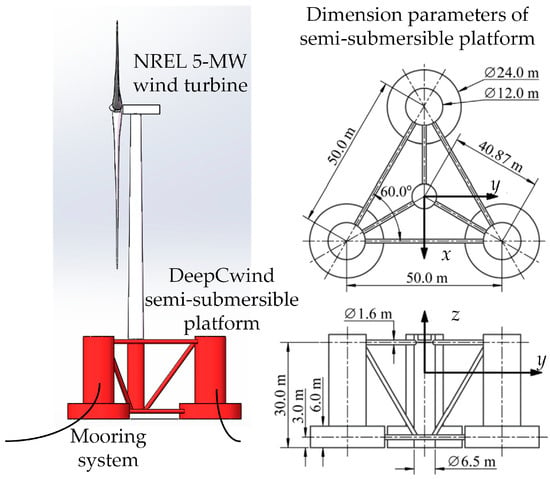
Figure 1
Open AccessReview
Towards LLM Enhanced Decision: A Survey on Reinforcement Learning Based Ship Collision Avoidance
by
Yizhou Wu, Jin Liu, Xingye Li, Junsheng Xiao, Tao Zhang, Haitong Xu and Lei Zhang
J. Mar. Sci. Eng. 2025, 13(12), 2275; https://doi.org/10.3390/jmse13122275 - 28 Nov 2025
Abstract
This comprehensive review examines the works of reinforcement learning (RL) in ship collision avoidance (SCA) from 2014 to the present, analyzing the methods designed for both single-agent and multi-agent collaborative paradigms. While prior research has demonstrated RL’s advantages in environmental adaptability, autonomous decision-making,
[...] Read more.
This comprehensive review examines the works of reinforcement learning (RL) in ship collision avoidance (SCA) from 2014 to the present, analyzing the methods designed for both single-agent and multi-agent collaborative paradigms. While prior research has demonstrated RL’s advantages in environmental adaptability, autonomous decision-making, and online optimization over traditional control methods, this study systematically addresses the algorithmic improvements, implementation challenges, and functional roles of RL techniques in SCA, such as Deep Q-Network (DQN), Proximal Policy Optimization (PPO), and Multi-Agent Reinforcement Learning (MARL). It also highlights how these technologies address critical challenges in SCA, including dynamic obstacle avoidance, compliance with Convention on the International Regulations for Preventing Collisions at Sea (COLREGs), and coordination in dense traffic scenarios, while underscoring persistent limitations such as idealized assumptions, scalability issues, and robustness in uncertain environments. Contributions include a structured analysis of recent technological evolution, and a Large Language Model (LLM) based hierarchical architecture integrating perception, communication, decision-making, and execution layers for future SCA systems, which prioritizes the development of scalable, adaptive frameworks that ensure robust and compliant autonomous navigation in complex, real-world maritime environments.
Full article
(This article belongs to the Special Issue Emerging Topics in Intelligent Technology for Maritime Autonomous Systems)
►▼
Show Figures
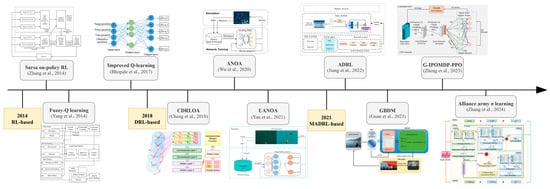
Figure 1

Journal Menu
► ▼ Journal Menu-
- JMSE Home
- Aims & Scope
- Editorial Board
- Reviewer Board
- Topical Advisory Panel
- Instructions for Authors
- Special Issues
- Topics
- Sections
- Article Processing Charge
- Indexing & Archiving
- Editor’s Choice Articles
- Most Cited & Viewed
- Journal Statistics
- Journal History
- Journal Awards
- Society Collaborations
- Conferences
- Editorial Office
Journal Browser
► ▼ Journal BrowserHighly Accessed Articles
Latest Books
E-Mail Alert
News
Topics
Topic in
Applied Sciences, Climate, Ecologies, JMSE, Water, Sustainability
Climate Change and Aquatic Ecosystems: Impacts, Mitigation and Adaptation
Topic Editors: Helena Veríssimo, Tiago VerdelhosDeadline: 31 December 2025
Topic in
Atmosphere, JMSE, Sustainability, Water
Sustainable River and Lake Restoration: From Challenges to Solutions
Topic Editors: Yun Li, Hong Yang, Xiaogang Wang, Zhengxian Zhang, Boran ZhuDeadline: 31 January 2026
Topic in
Applied Sciences, Energies, Geosciences, JMSE, Minerals
Formation Mechanism and Quantitative Evaluation of Deep to Ultra-Deep High-Quality Reservoirs
Topic Editors: Jianhua He, Andrew D. La Croix, Jim Underschultz, Hucheng Deng, Hao Xu, Ruyue Wang, Rui LiuDeadline: 31 March 2026
Topic in
Clean Technol., Energies, JMSE, Processes, Sustainability
Marine Energy
Topic Editors: Hongsheng Dong, Xiang Sun, Zeshao YouDeadline: 30 April 2026

Conferences
Special Issues
Special Issue in
JMSE
Deep-Sea Mineral Resource Development Technology and Equipment
Guest Editors: Shuqing Wang, Yejian Wang, Yingying WangDeadline: 5 December 2025
Special Issue in
JMSE
Application of Deep Learning in Underwater Image Processing—2nd Edition
Guest Editors: Chia-Hung Yeh, Chua-Chin Wang, Guo-Shiang LinDeadline: 5 December 2025
Special Issue in
JMSE
Advances in Offshore Foundations and Anchoring Systems
Guest Editors: Fayun Liang, Yifeng Lin, Hao Zhang, Chen WangDeadline: 5 December 2025
Special Issue in
JMSE
Advances in Marine Engineering: Geological Environment and Hazards—3rd Edition
Guest Editors: Xingsen Guo, Xiaolei Liu, Tingkai Nian, Thorsten StoesserDeadline: 5 December 2025








